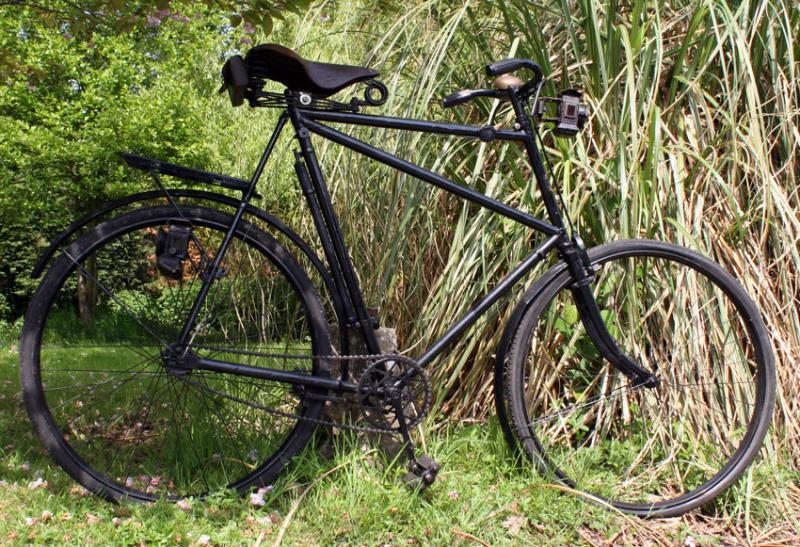

I’m intrigued how different frame sizes affect the profile of a ‘Truss Frame’. A shorter headstock means a more shallow angle, as you can see by comparing two American Lovell Diamond Truss Frames above: a 22″ on the left and 24″ facing it.
A truss is an extra support: the description ‘truss frame’ is very general, and can include an extra bracing tube anywhere within the frame diamond. The Lovell Diamond Truss Frame Roadster first appeared in the company’s 1909 catalogue. The design was already in use in England: the 1906 Helical Royal Premier shown below has an even more accentuated truss tube than the Lovell Diamonds due to its large 26″ frame.


1920s French Truss Frame Road Racer
22″ Frame
28″ Wheels with coaster brake

This ‘truss frame’ machine is not a Lovell Diamond, but an extremely rare French version. It has no badge. There is no research material available regarding this design in France.
When the American champion cyclist Major Taylor raced in France he used an Iver Johnson ‘truss-bridge’ racer. Soon after, Labor started making the same design under licence for the French market. Other French manufacturers followed suit and it became a popular style in France.
Iver Johnson originally manufactured bicycles for the Lovell Diamond company, and they bought the Lovell Diamond company outright in 1900. Iver Johnson’s Truss Bridge was the world’s market leader for a braced machine. They appear to have marketed the Lovell Diamond Truss Frame Roadster as a cheaper option, probably registering its design to prevent other companies introducing a similar ‘Truss Frame’ to compete with their Truss Bridge. There are not many surviving examples of the Lovell Diamond in the USA, and this is the only French one I have seen using the same design.
This example has been repainted and uses a retro wheelset with coaster brake for road-going efficiency.




















1912 LOVELL DIAMOND CATALOGUE























































